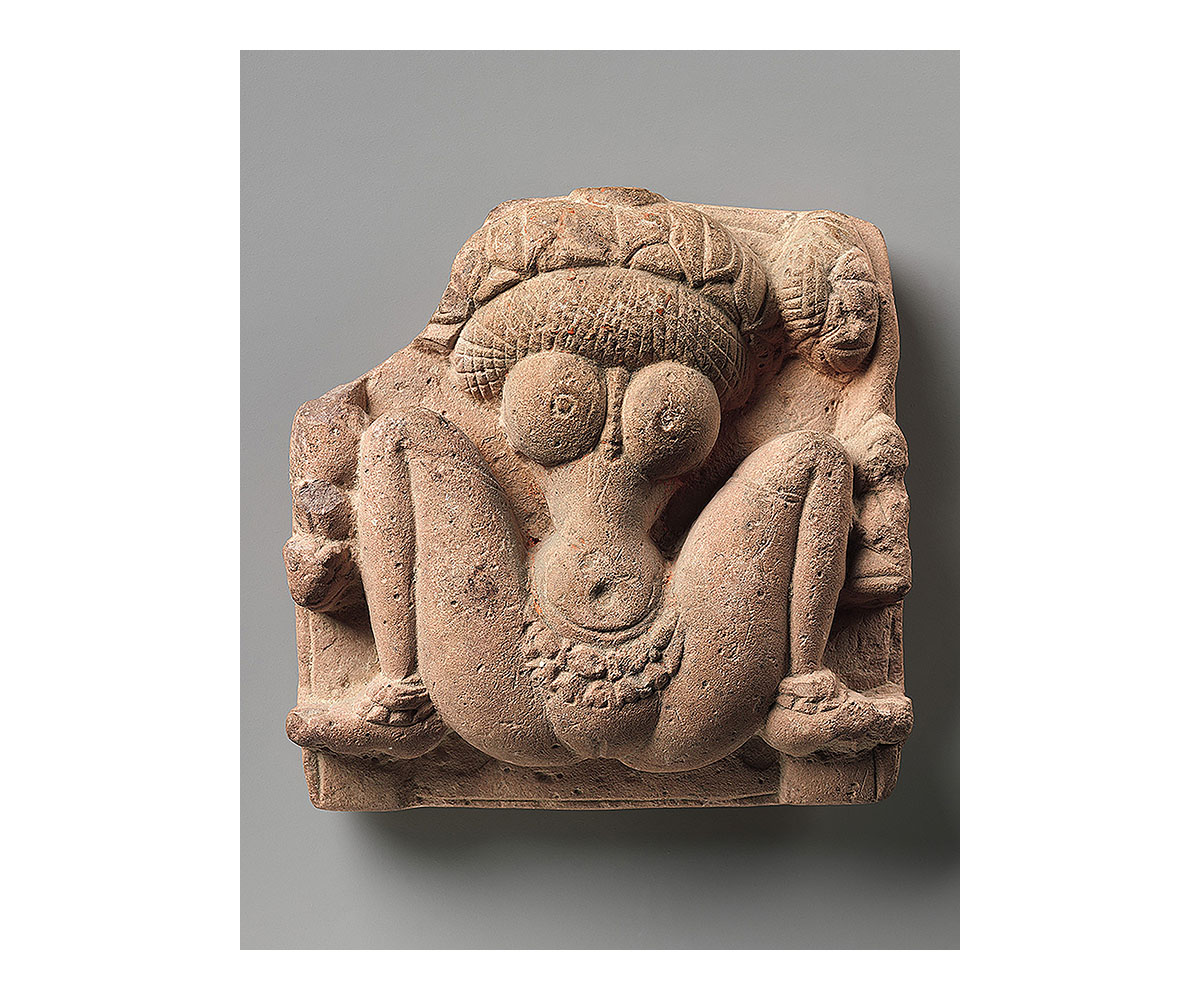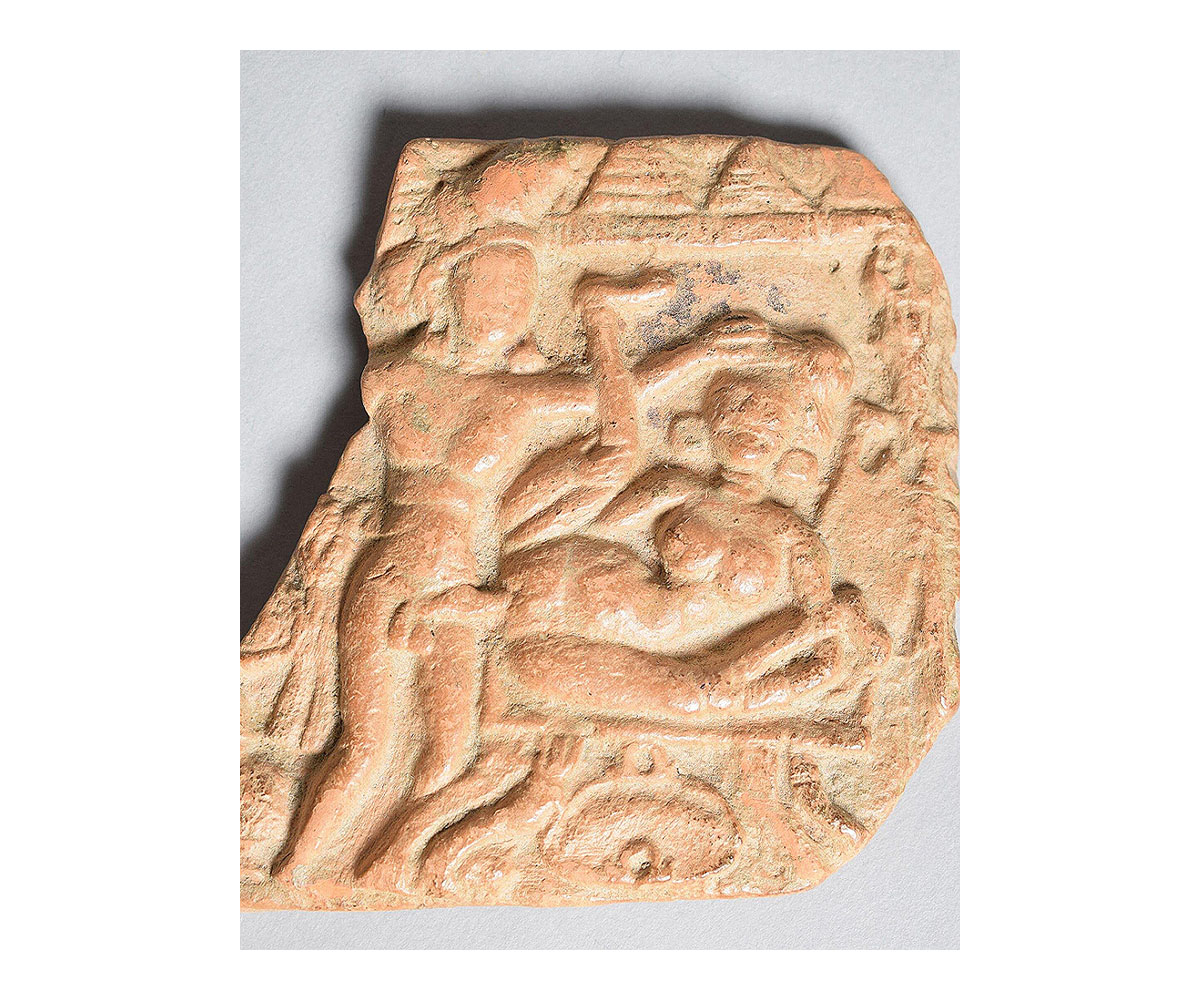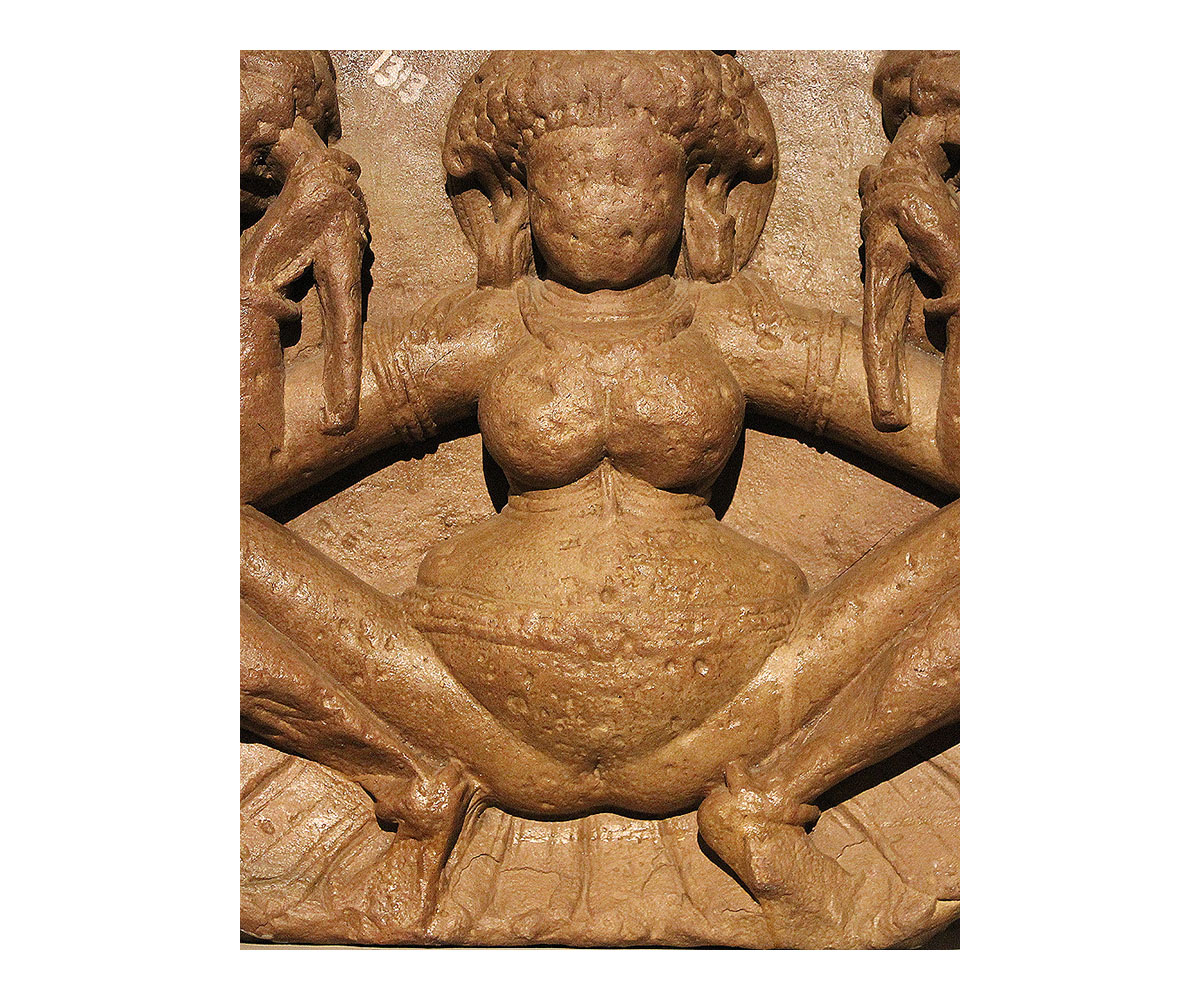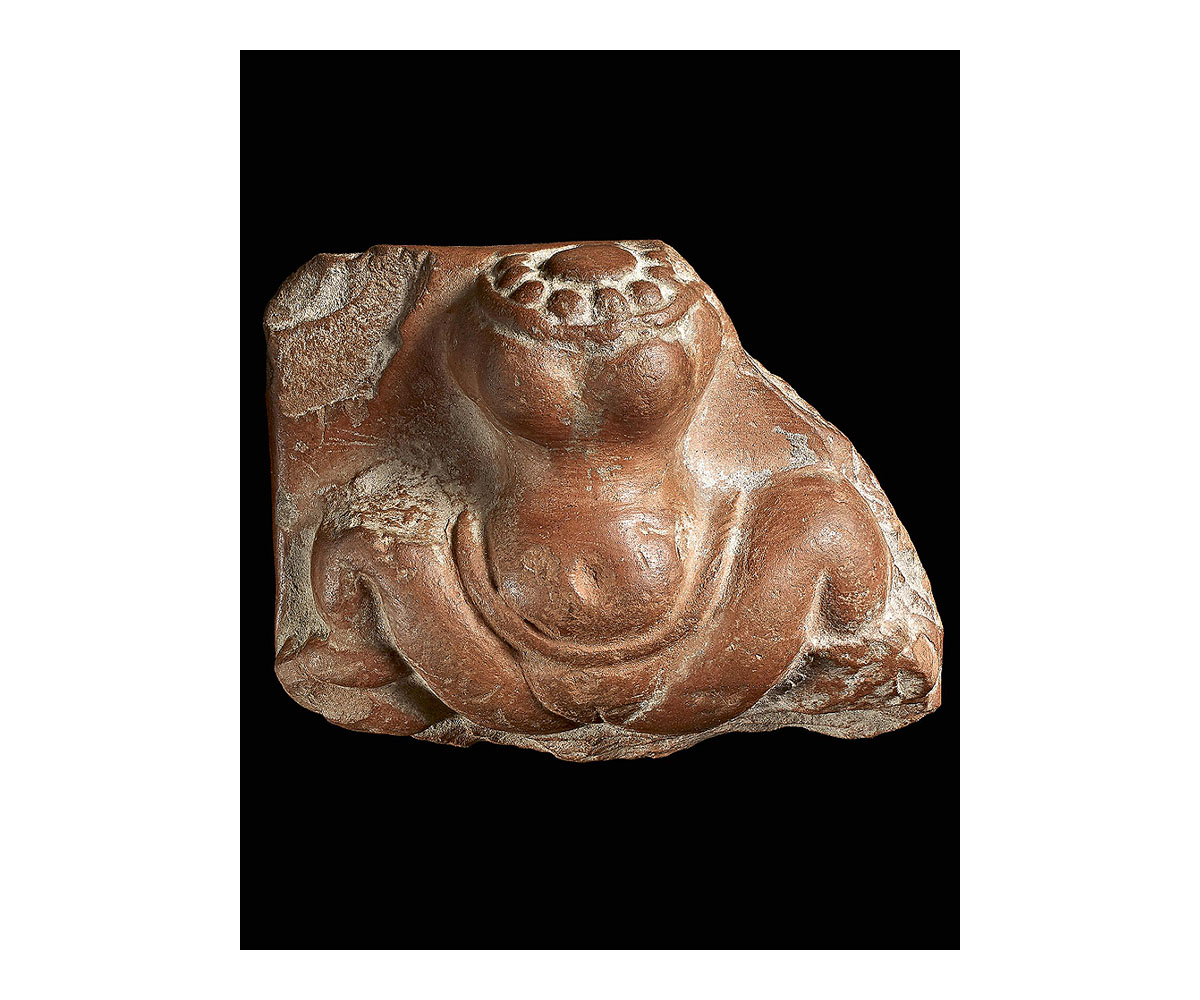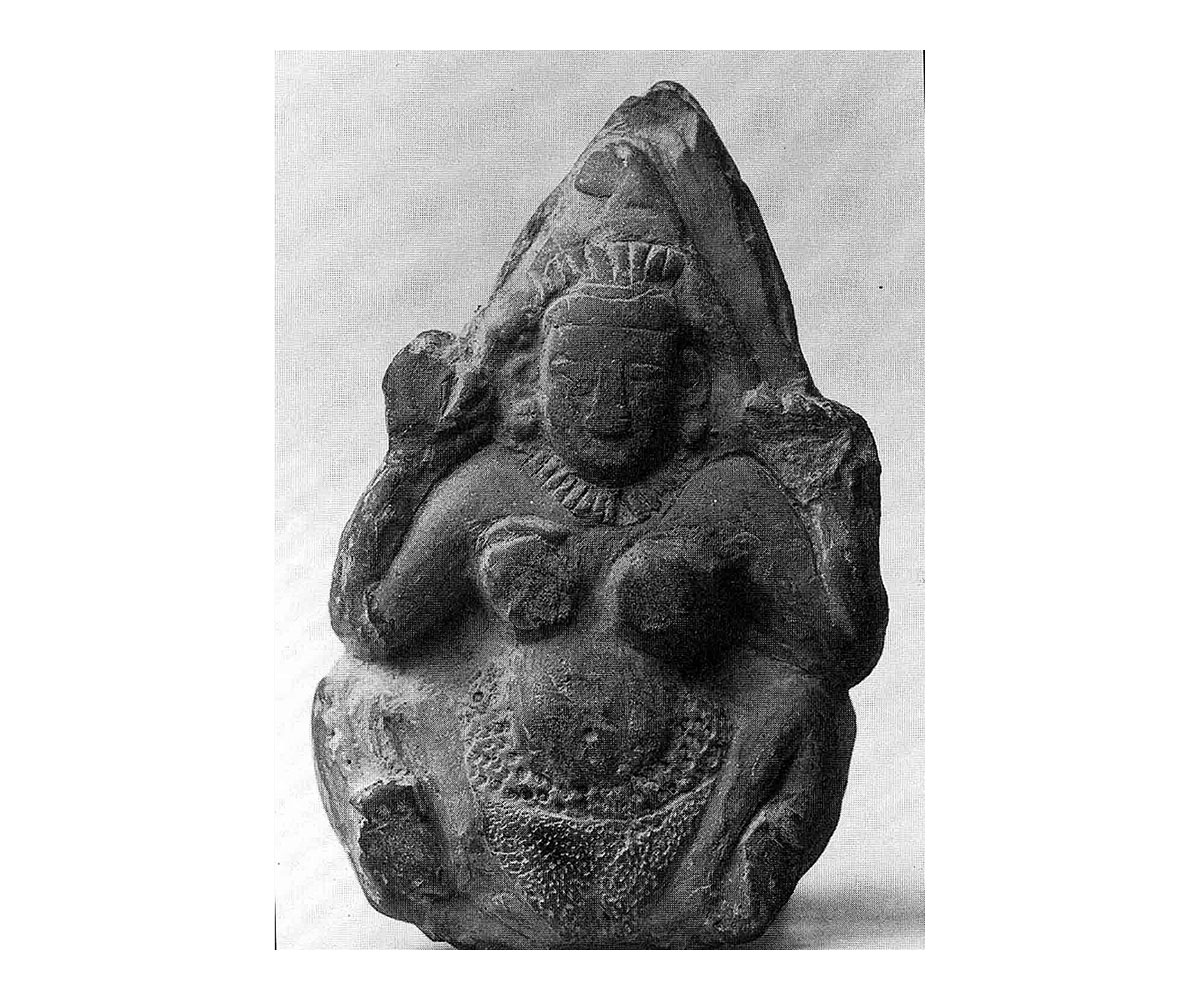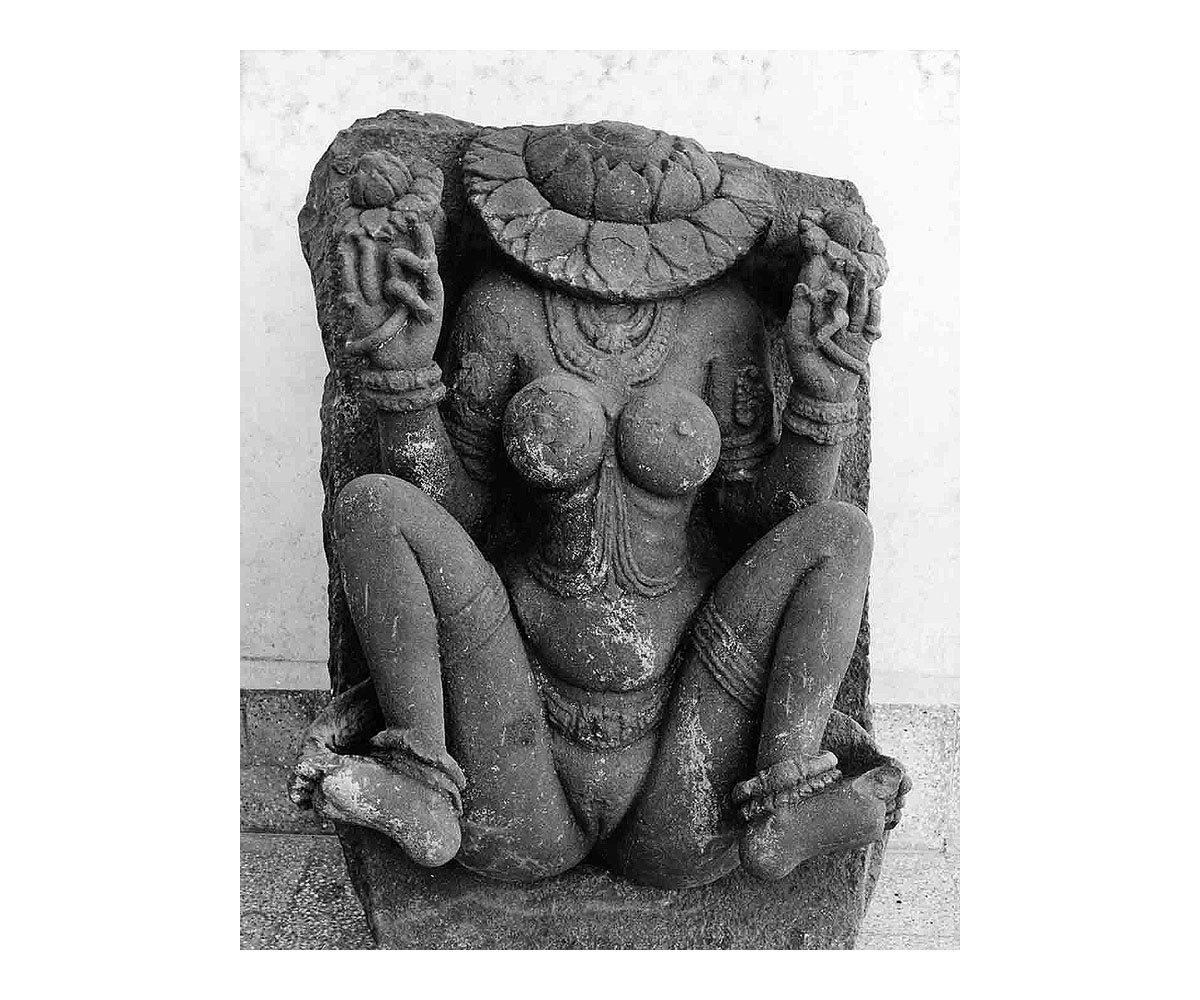PERSPECTIVES
Many Forms, Many Lives: Lajja Gauri in Indian Art
What comes to your mind when you think of a goddess? Most people imagine fantastical human forms, often with multiple heads and limbs. However, when we look into the history of how deities were depicted in the Indian subcontinent, we come across objects and symbols such as pots, lotus heads and even animal figures being worshipped. One such curious deity — referred to as Lajja Gauri — is typically represented as a composite image with a female torso, a lotus-head instead of a human head, no arms and a pair of spread-out legs with the vertical line of the goddess’ genitalia indicated. This last feature remains her most characteristic and defining attribute across a vast range of her iconographic forms.
Sculptures of the goddess have been found across the Indian subcontinent, especially in the Deccan. Over her millennium-long appearance in the cosmos of Indian images, Lajja Gauri’s image developed from a simple, aniconic vase to a fully anthropomorphic female form. Small, crudely carved stone and moulded terracotta images from south India show that the goddess was originally a village or folk goddess, imagined as the purna kumba or brimming pot — a popular primordial symbol which stands for fertility.
The second century saw her becoming anthropomorphised to consist of a pair of spread-out legs and being assimilated into Shaivism as Gauri, a specific form of goddess Parvati, the consort of the Hindu god Shiva. In the third century, her status was elevated from a popular to an imperial goddess and her image further acquired breasts, a lotus-head and arms holding lotus buds. By the mid-sixth century, a fully female form of the goddess had received patronage from the Kalachuri dynasty, finding representation in cave 21 at Ellora. From the eleventh century onwards, the goddess seems to no longer have been actively worshipped in most parts of the subcontinent for unknown reasons. Her abundance in visual culture, across north and south India from the second to eleventh century CE, coupled with her almost-complete absence in Hindu, Buddhist and other religious and contemporary textual sources and commentaries only adds to her mystifying persona.
Analysing Lajja Gauri’s iconographic representations, the style and medium in which her images were made and the contexts in which they have been found allow us to think through her history. Most of the small, aniconic images of Lajja Gauri discovered at southern sites like Ter, Kondapur and Bhita seem to have been made of stone and not terracotta. These findings refute earlier assumptions that held that Lajja Gauri images were largely mass-produced, made of terracotta (considered a lower medium than stone) and worshipped by people of low social status. Royal patrons like the Mauryas and the Guptas are also known to have commissioned sculptures of the goddess.
It is interesting to note that Lajja Gauri became anthropomorphised around the same time the first Buddha image was made in either Gandhara or Mathura, between the first and third centuries. In fact, this was a time when a range of deities such as the Buddha, Vishnu and Shiva who had earlier only been represented through aniconic symbols such as a pair of footprints, a parasol, or a tree acquired human forms. In most images, the first anthropomorphic features to be carved or painted on were the eyes or the head of the deity which would allow devotees darshan — the act of reciprocal viewing or beholding — of the god or goddess. But in the case of Lajja Gauri, a pair of legs was added to indicate her specific symbolic status as the source of life.
As Lajja Gauri’s image evolved, the position of her legs remained unchanged: spread out, drawn up and bent at knees in uttanapad or ‘birth position’. Her most abundant iconographic form is also armless, making her unmistakably female features — her breasts, womb and genitalia — the most prominent. But these very features have also, due to changing attitudes and the import of Victorian morality to the Indian middle class, led to the desecration of several Lajja Gauri sculptures and the disappearance of ritual practices associated with her. While the name, Lajja Gauri, derives from the Sanskrit root “lajja” meaning shame or modesty and translates to “Gauri, goddess of modesty”, the goddess has been variously described with epithets such as “shameless goddess” and “displayed female” by both British and Indian surveyors.
Lajja Gauri has, therefore, been equally revered and rebuffed for the iconographic symbolism of her body parts. However, the symbolism of Lajja Gauri’s suggestive form has to be understood as different from the primarily erotic figures found in Indian and other cultures. For example, Lajja Gauri’s genitals are only suggested by the line between her spread-out legs. While it has sexual connotations, along with the symbolism of the lotus, the brimming pot and the uttanapad pose, we can read her figure as relating to ideas of fertility, generation and creation.
Lajja Gauri’s passage from the local village shrine to the royal temple in the urban centre was by no means even or simple across time and space. The development of her image from the abstract symbolic (the purna kumbha and uttanapad combination) to the elaborately anthropomorphic (her bejewelled, muscular and suggestive female form) as she made her way into the Hindu pantheon offers an interesting challenge to our general assumptions about Indian art: it blurs the assumed boundaries between the high and the low, the popular and the classical, and the sacred and the profane.
Bibliography
“Goddess Lajja Gauri in Indian Art.” Virtual Museum of Images and Sounds. Accessed May 7, 2024. https://aims.vmis.in/caa-exhibitions/exhibition/goddess-lajja-gauri-in-indian-art/?back=ago
Bolon, Carol Radcliffe. Forms of the Goddess Lajjā Gaurī in Indian Art. New Delhi: Motilal Banarsidass, 1997.
Eck, Diana L. “Darshan of the Image.” India International Centre Quarterly 13, no. 1 (1986): 43–53. http://www.jstor.org/stable/23001674.
Kulkarni, RH. “Lajja Gauri: Fertility Cult & Mother Goddess Worship.” New Indian Express. April 29, 2021. https://www.newindianexpress.com/opinions/2021/apr/29/lajja-gauri-fertility-cult-mother-goddess-worship-2296166.html.
Sharma, Kamayani. “The History of the Mysterious Lajja Gauri Found around India.” Scroll.in. July 23, 2022. https://scroll.in/magazine/1028346/the-history-of-the-mysterious-lajja-gauri-found-around-india.




